Taiwanese Aboriginal Festival Photographs — 臺灣原住民
This is a collection of photographs taken at Aboriginal festivals and events throughout the island over the years. For a more complete selection of photographs of Taiwanese officially recognized tribes see this project:
Taiwan's original people (原住民) have lived on this island for perhaps 8,000 years and are all Austronesian-speaking people -- some anthropologists even believe all Austronesian people originated in Taiwan. Taiwanese Aboriginals have many ethnic groups, languages and traditions, and have all been assimilated into modern Han Taiwanese society to differing degrees. Taiwan's government divides these indigenous people into (a fairly arbitrary) fourteen 'officially recognized Aboriginal Tribes,' and an even more arbitrary 'High Mountain' and 'Plains' Aboriginals.
Today, recognized Aboriginals comprise about 2% of Taiwan's population -- although recent genetic studies indicate this number could be closer to 60% if it included 'Plains Aboriginals.
The fourteen recognized groups are:
Amis 阿美族, Atayal 泰雅族, Bunun 布農族, Kavalan 噶瑪蘭族, Paiwan 排灣族, Puyuma 卑南族, Rukai 魯凱族, Saisiyat 賽夏族, Sakizaya 撒奇萊雅族, Seediq 賽德克族, Tao 達悟族, Thao 邵族, Tsou 鄒族 and Truku 太魯閣族.
Some unrecognized groups that are actively lobbying for recognition are:
Babuza, Basay, Hoanya, Ketagalan, Luilang, Pazeh/Kaxabu, Papora, Qauqaut, Siraya, Taokas and Trobiawan
Nomenclature can be confusing as names are translated from ancient, sometimes extinct, languages and arbitrary groupings into Chinese (sometimes via Taiwanese) and then into English.
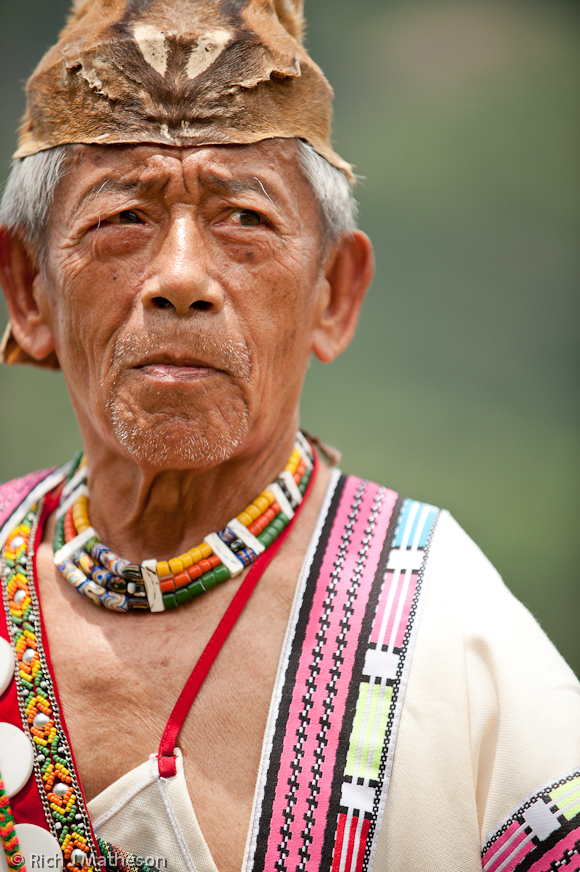
Bunun Aboriginal Tribesman wears a barking deer hide headdress and beads, Taiwan
My wife is a Taiwanese Aboriginal from the Bunun Tribe 布農族 and I have been photographing Taiwanese Aboriginal festivals for many years, mostly in Namasia District (那瑪夏區) in Kaohsiung. This project is mostly portrait style photographs that I have taken over the years.
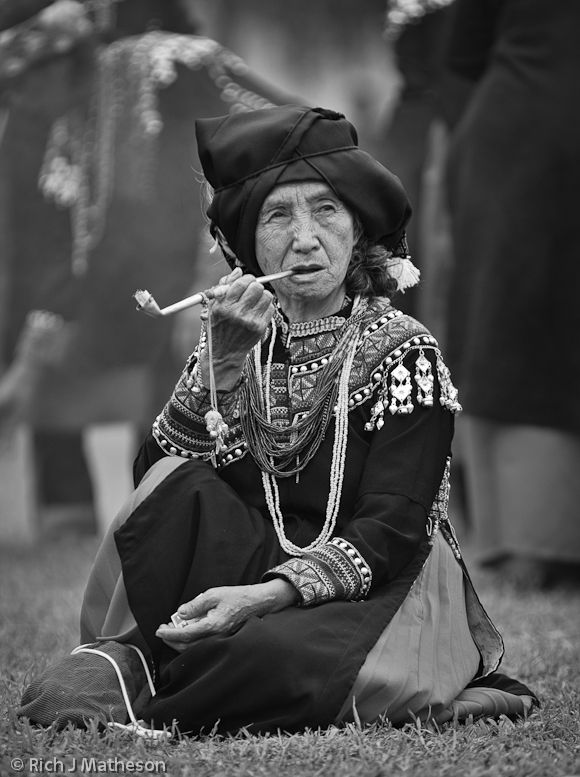
Bunun Aboriginal Woman from Taoyuan Smokes a Pipe at Malatangia Festival in Namasia
This photograph of a beautiful Bunun Woman was taken at the ‘Ear Festival’ (布農打耳祭) in 2006 and has been one of my best-selling photographs. Notably, it was used on The China Post’s travel banner for several years and as the cover of two Bradt catalogs.
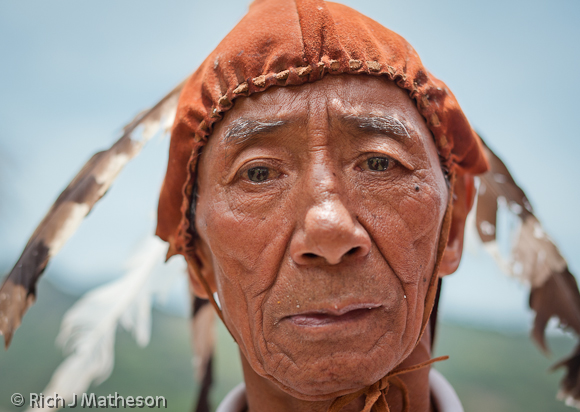
Elderly Bunun Aboriginal Tribesman in Namasia wears a feather and deer hide cap, Kaohsiung, Taiwan
During my time in Taiwan I have noticed a marked improvement of acceptance of Aboriginals and ethnic pride from Aboriginals themselves.
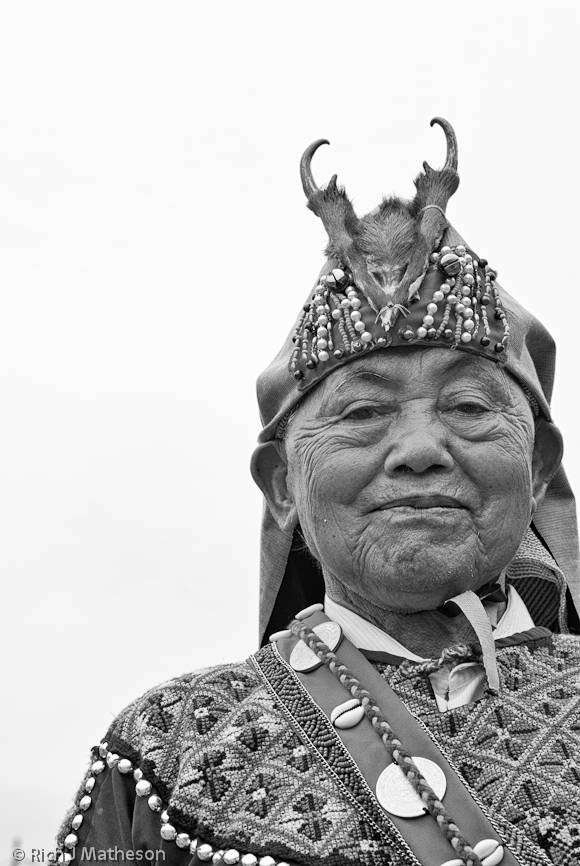
Taiwanese Bunun Aboriginal Tribesman with traditional headdress
Hunting is still very much a part of the Aboriginals life as can be seen by their traditional clothing.
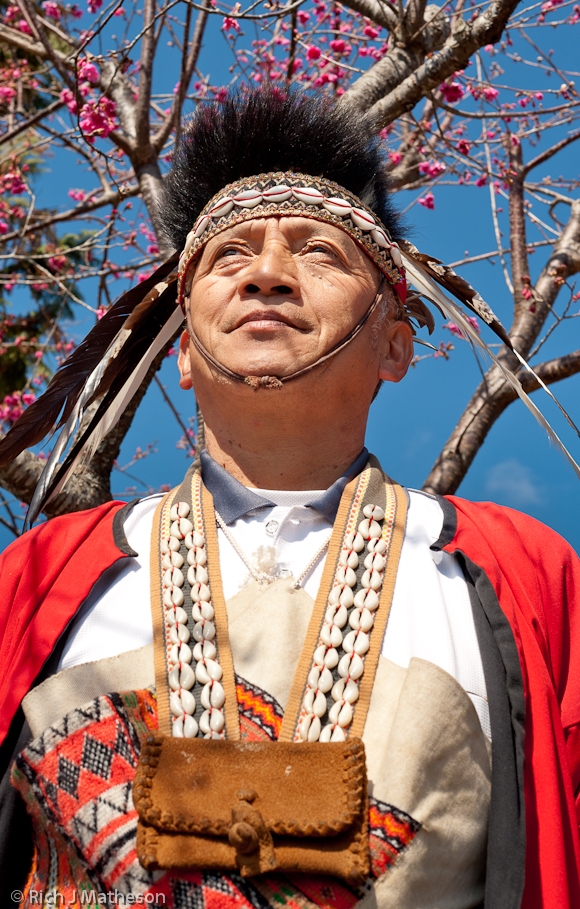
Tsou Aboriginal with cowrie, fur and feather headdress in Alishan
My wife’s mother is from the Tsou tribe in Alishan. The picture above is my wife’s cousin and was taken on one of our annual Chinese New Year trips to Alishan.
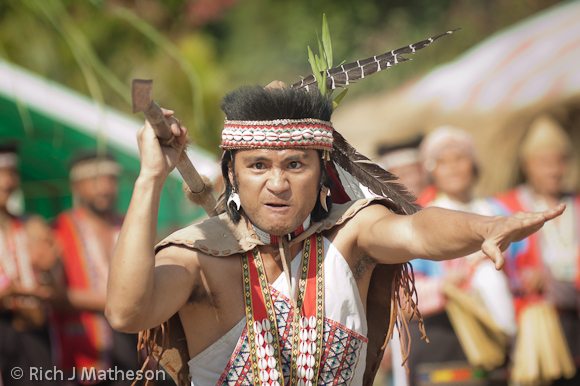
Zhou Aboriginal warrior from Lijia performing in Zahamu Park, Anping District, Tainan City, Taiwan
This is another popular Aboriginal photo that has been published in several magazines. This was a performance by a group of dancers from Lijia, Chiayi for the opening of Tainan Zahamu Aboriginal Park (札哈木原住民公園) in 2003. It was shot with the Nikon D100 which didn’t render skin tones very well.
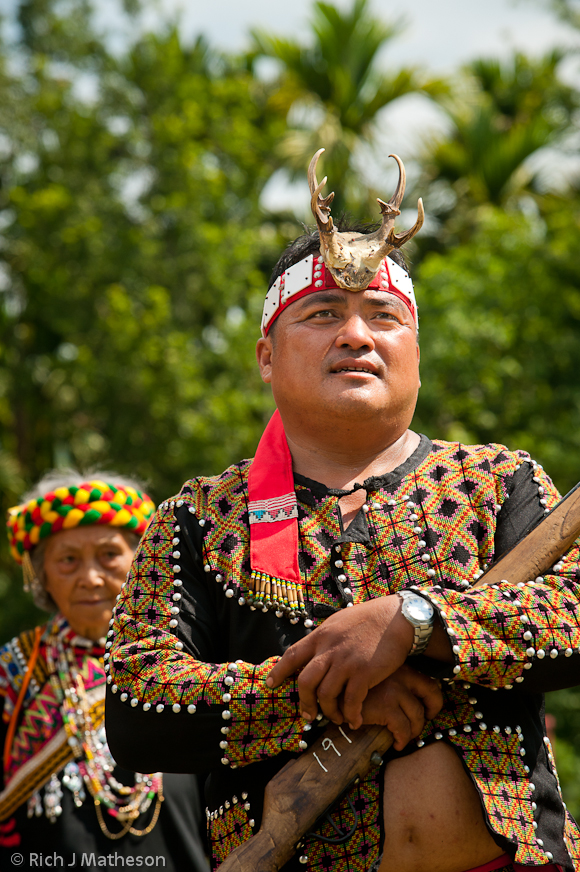
Bunun man holds rifle at Annual Bunun Ear Festival, Maya village, Namasiya Township, Kaoshiung County, Taiwan
This photograph was taken at the last festival before the deadly 2009 Typhoon Morakot and just after San Ming County (三民鄉) was renamed as Namasia (那瑪夏or Namaxia, Namasiya?), and the three townships were renamed from Ming Tzu (民族), Ming Chuan (民權) and Ming Shen (民生) to Nangisalu (南沙魯), Maya (瑪雅) and Takanua (達卡努瓦), respectively. This man is from Nangisalu, the worst hit of the three villages.
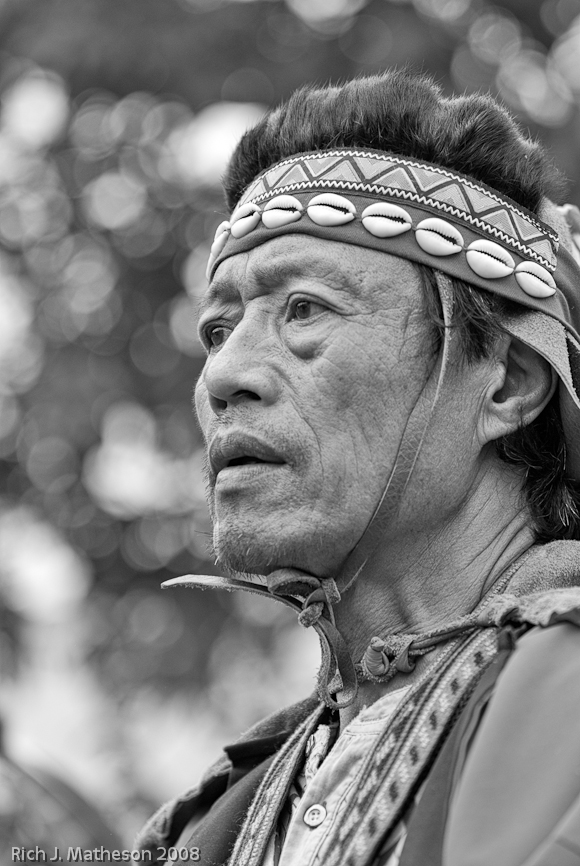
Portrait of Tsou Tribesman in traditional clothing.
The Namasia region was originally occupied by the Tsou Tribe. After a plague wiped out large numbers of the tribe, the neighboring Bunun moved in and they have coexisted for over a hundred years.
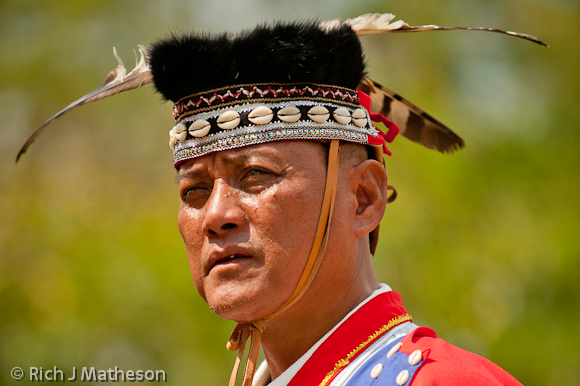
Tsou Kanakanavu Tribesman, Maya village, Ming Chuan, Namasiya Township, Kaoshiung County, Taiwan
Most indigenous areas of Taiwan have only one ethnicity but Namasia has at least five ethnic groups living together: Bunun, Tsou, Paiwan, Atayal and Hakka. While the government officially calls the Kanakanavu (卡那卡那富 or Southern Tsou as opposed to Northern Tsou of Alishan) and Hla’alua (沙阿魯阿 also Southern Tsou) of Namasia the ‘Tsou Tribe’ they hope to one day be recognized by their own divisions.
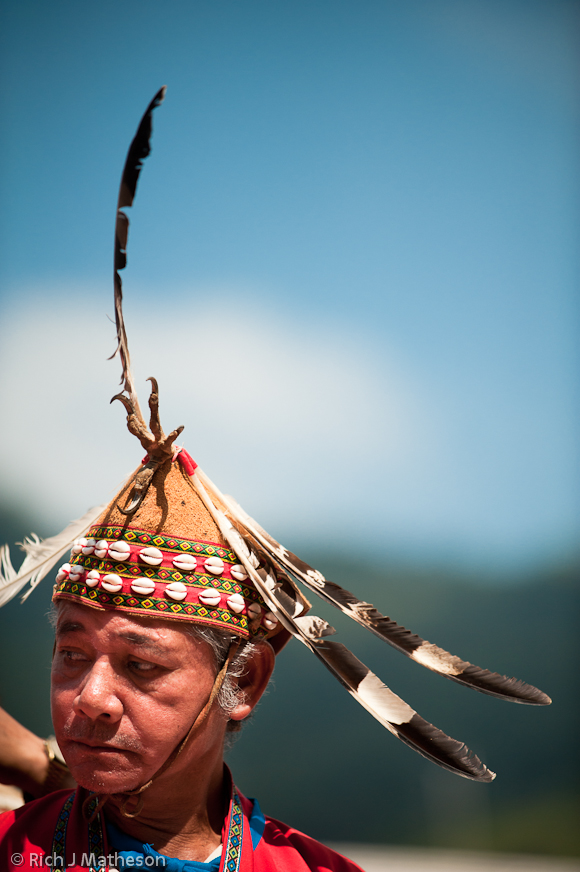
Hla’alua (Salaua) Headman, Annual Bunun Ear Festival, Maya village, Taiwan
This is the Hla’ alua Chief at a festival in Namasia. This photo was used on the cover of Steven Crook’s Bradt Taiwan Guide Book. The chief passed away not long after the guide became available. Sadly, I didn’t have a chance to personally show him a copy. I suspect he never saw it.
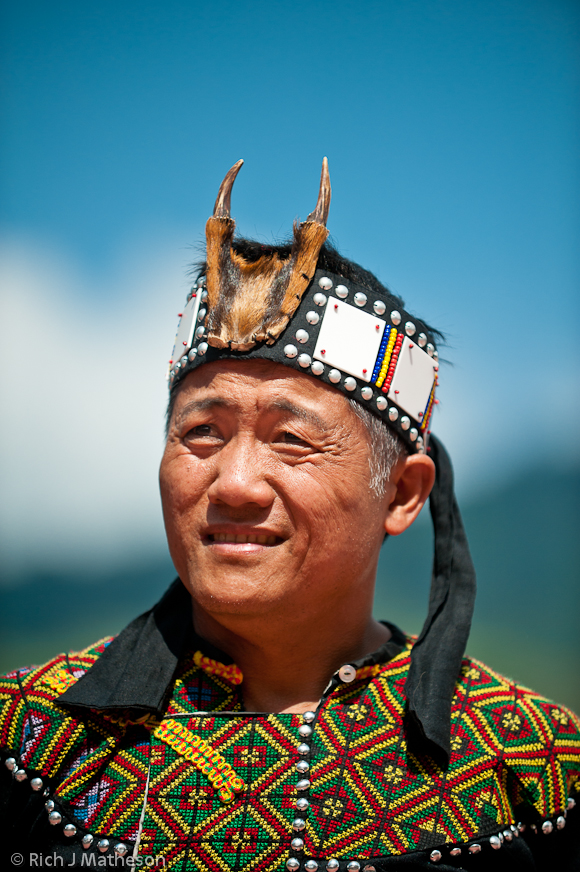
Bunun wearing barking deer headdress, Annual Bunun Ear Festival, Maya village
This man was a Bunun living in Taipei. He came down to the Malatangia Festival (sometimes: manah tainga) with a Taipei group of Bunun. He has a nice face, I think.
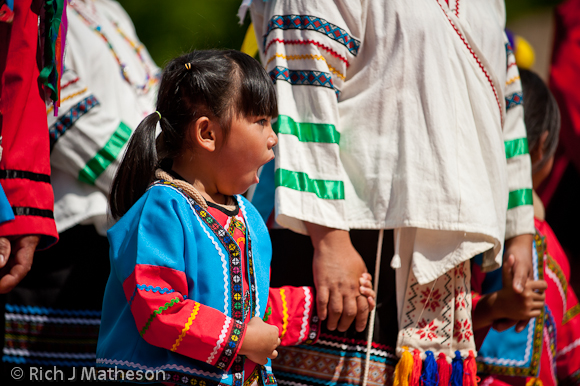
Yawning Taiwanese Tsou Aboriginal Girl
Waiting for the festival to begin. Salua Tsou from Maya.
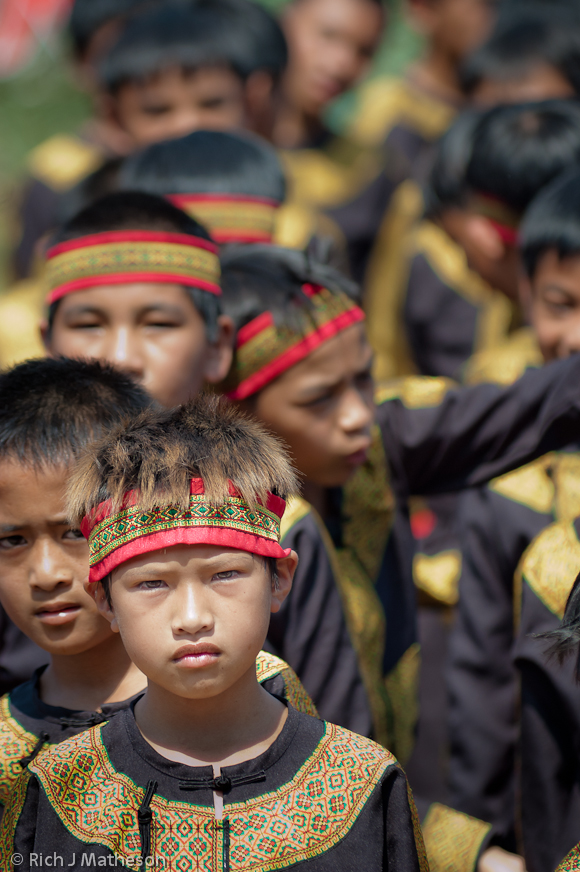
Taiwanese Aboriginal Schoolchildren wait for festival to begin.
One of my personal favorites. Taken in 2004 with my D100. I printed this poster size for a photography exhibition and it printed quite well. It is now hanging in my wife’s Aboriginal Pub, Hudlavoos.

Paiwan Aboriginal Boy in Sandimen Township (三地門鄉)
In a very lucky break, I happened upon this rehearsal for a festival en route to Wutai which enabled me to get some nice Aboriginal people shots to fill out an assignment for Topics magazine.

Tsou Kanakanavu Aboriginal girl from Takanua Namasia in traditional clothing
Tsou seems to be the most commonly accepted English spelling for 鄒族, but Zhou and Chou are still commonly used.
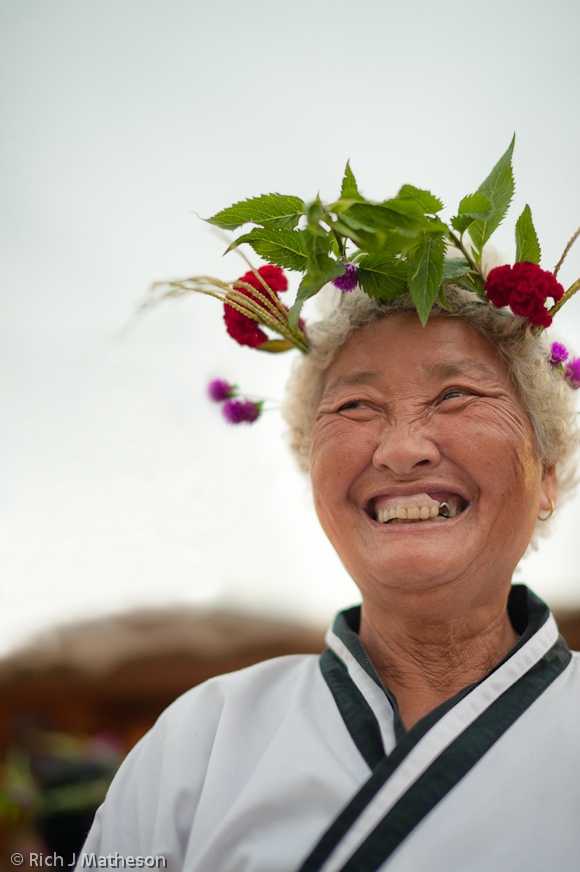
A Siraya Pingpu from Kamasua (台南東山吉貝耍部落) with a traditional headdress made from cockscomb, amaranth and eupatorium.
Photographed at Xiaolin Plains Aboriginal Night Ceremony. For more information about Plains Aborigines, see my article on Liuchongsi Pingpu Night Sacrifice here.
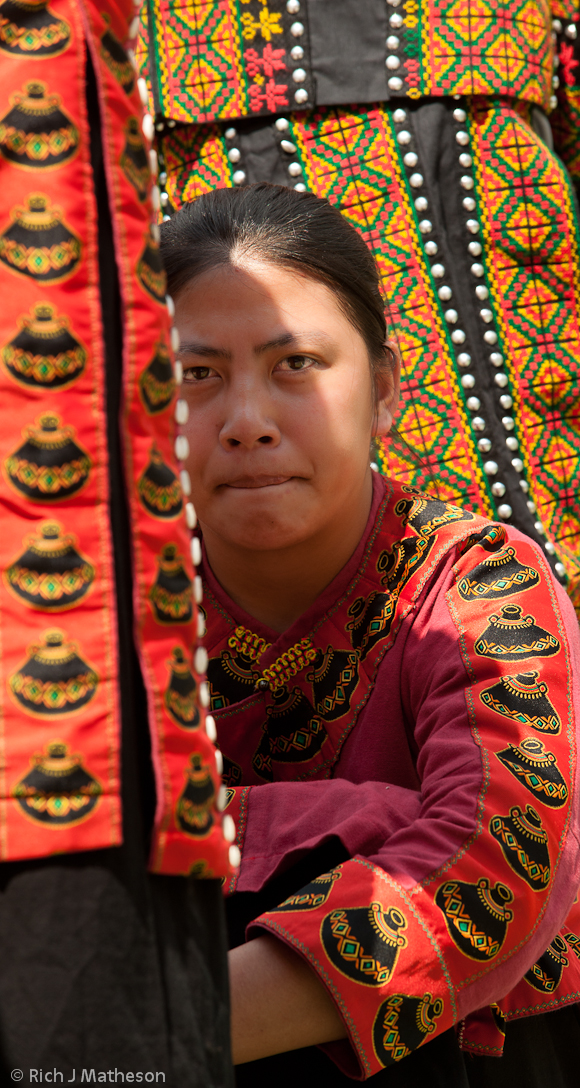
Paiwan Aboriginal Girl from Namasia
Namasia also has a large Paiwan population, mostly settling in the area through marriage.
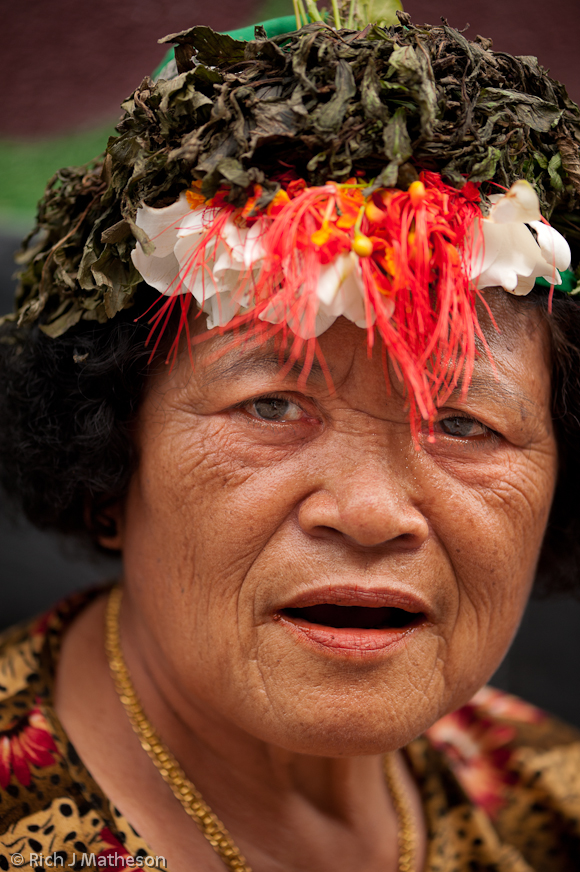
Rukai woman wearing floral wreath cross stitches in the sun
This woman was sitting with her friend cross stitching in Wutai (霧台) Village. They were wearing traditional floral wreaths because they had just come from church.
Adorned with embroidery, shells, bones, trinkets and glass beads, the traditional Rukai costume, is one of the most elaborate and beautiful of all Taiwan’s Aboriginal tribal clothing.
I went to a friend’s wedding in Chingye, Pingtung and was pleasantly surprised to find all Aboriginal attendees wearing their traditional Rukai or Paiwan clothing, even the kids.
This Rukai elder had a great face and expression.
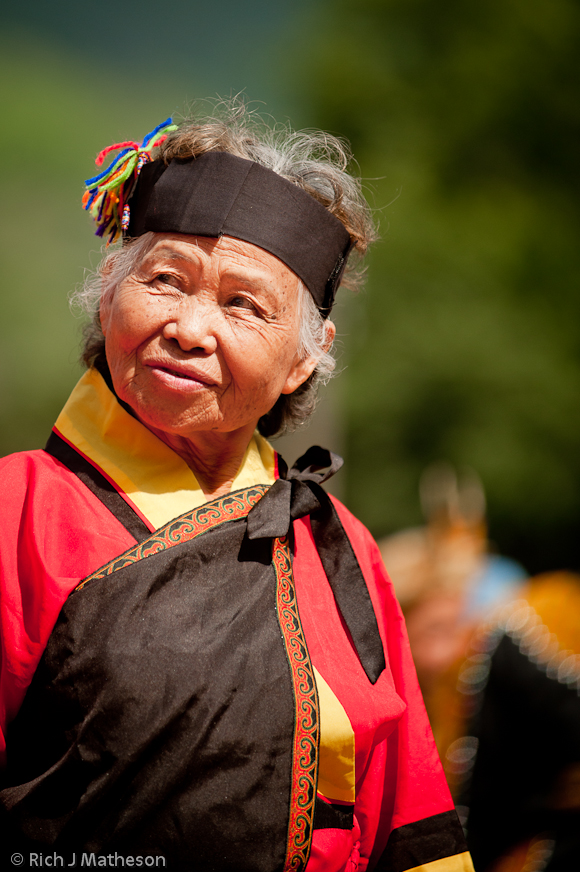
Pingpu Elder from Xiaolin Village
This image of a Pingpu Plains Aboriginal woman from Xiaolin was taken before Typhoon Morakot caused a catastrophic landslide to bury the entire village of some 300 houses. Only two houses on the outskirts of town were spared. For more information on this tragic event and efforts to preserve their culture see the article ‘Xiaolin Plains Aboriginal Night Ceremony‘ that I published for culture.tw.
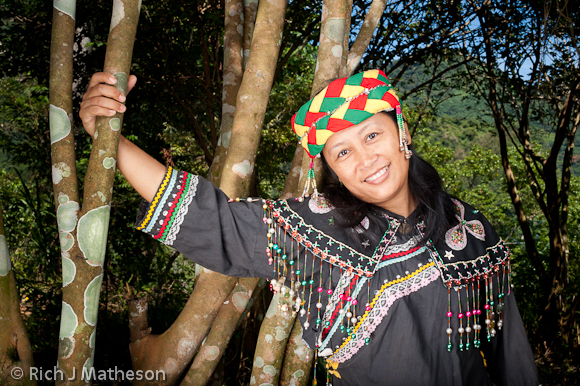
Bunun Aboriginal Tribeswoman in Namasia District, Kaoshiung City, Taiwan
My lovely wife posing for a portrait on our land in Takanua, Namasia. She is wearing a Bunun costume she bought when she was still in school, almost thirty years ago. She has made a few sets of clothing for herself since (including a set for me, my mother and vests for all of my relatives for our wedding), but this is my favorite. Although the tassels are made of drinking straws and cheap plastic beads, it was quite expensive. My wife and her twin sister saved up the money for the attire and it is still a source of pride for her.



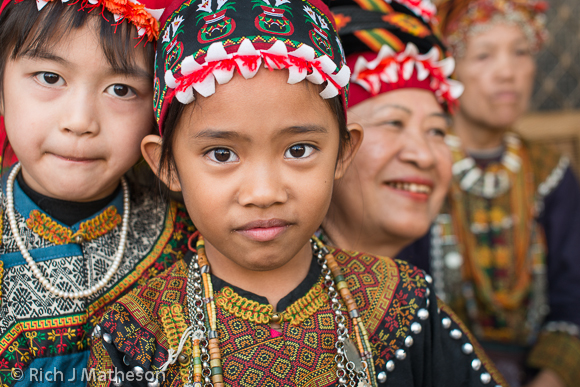
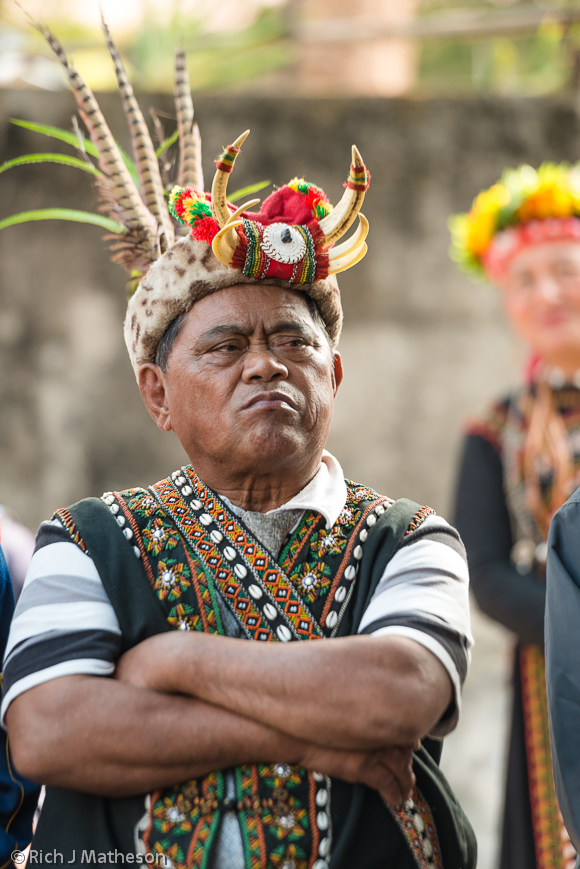




This day has changed my life forever. I am half Taiwanese from San Diego, California (USA) and I’ve been part of the Native American community for many years. I also have been part of the Ifa community for many years as well. My interest in feathers has come from the Native American community and my interest in cowry shells has come from the Ifa influence. I never really understood why I have taken such interest as a half-Taiwanese, half-American male; and after finding these pictures I am starting to understand more of who I am. I want to know more about my ancestry and I am very grateful to have run into this website today. Thank you so much again.
Best Regards,
Robert Doerr
Hi Robert,
Thanks for commenting, I’m always glad to hear when someone reads my blog, let alone is moved by it!
Rich,
You have a great site full of “rich” colored pictures. Your mountain shots are breath taking. The aboriginal ones here are excellent. I hope you will join with us in Rangi and use your talents to take photos like these for our group. We are currently having a Toy and Clothing Driver for the Bunun in Hualien. We will be going over there the 3rd weekend in June. Let me know if you would like to go along. It would be a good time to get to know each other. If you or your contacts have something to donate kindly let me know.
Gary
I would love to join Rangi, thank you and good luck with the drive!
Hello Rich,
What a stunning website. I am a photographer in Portland, Oregon, USA, and my mother is Amis. I am envious of your access to these photographic opportunities! I’ve been fortunate to live and travel in Taiwan, but that was when I was younger and before I started working as a photographer. Please keep up the good work: not only are your images beautiful, they are so important to preserving these beautiful people and their cultures.
Best,
Min
Thank you, Min. So nice to hear from a fellow photographer. Your photography is beautiful and I am envious of your Oregon environs!
Min, we are in Portland also, and our daughter is half Amis and half Puyuma!
Thank you, THANK YOU for these incredible pictures! Taiwan is a huge part of our family and our hearts since we adopted our daughter, who is half Amis and half Puyuma. It can be hard to find information about the tribes culture, especially in English.
can you please identify this kind of cap? This is also from Taiwan.
https://www.facebook.com/photo.php?fbid=3486960710983&set=a.1772779817532.71773.1780385421&type=1&theater
Thanks.
Hi Mary Antoinette,
Nice hats. I think it is a fairly generic aboriginal pattern possibly manufactured in China. My wife sometimes buys rolls of that pattern to stitch onto the clothes she makes because it is cheaper and faster than cross stitching a pattern herself.
Beautiful renditions of beautiful people. I am very happy to see the beauty of the people that dot the mountains of central Taiwan on your website. Every summer, I leave Montreal to tour the mountain roads of central Taiwan alone on my scooter and your photographs remind me of those beautiful moments in the moutains.
Thank you,
Francis
Thanks, Francis. Lucky you, scooter is the best way to tour the mountain roads!
Rich,
I am in Hualien right now with my husband who is flying in the Hualien Hot Air Balloon Fest and have met so many wonderful people. One of the young ladies I met just today is an aborigine from the Amis tribe. Her name has something to do with her origin so I came back to my hotel and decided to look up the tribe. I found your post and beautiful pictures and am so grateful to be able to learn more about my new acquaintance. Thanks!
Your pictures are wonderful! I have been reading about Taiwan and this has been most interesting and the best pictures I have seen! Thanks
Thank you!
I have lived in Taiwan the last year as an exchange student in 宜蘭 where I also had the opportunity to meet and make friends with some aborigines living there. I do have a few pictures of them too and I think it’s stunning the intensity of emotion that can show on their faces.
Now I’m back to my “normal” life and thinking of making a project in school about Taiwan’s aborigines. So I just found these pictures and am so grateful because I once again feel how much Taiwan and everyone who lives there means to me.
Thanks
莉娜
Nice to hear!
Tena koe e hoa,
Thankyou too as for I am from New Zealand my country and Maori is my culture. I am studying at university and it too means a great deal of who are every day I scout… But this is so enormously good to me my whanau as I feel connection through the photographs I am sincerely grateful again Kei te pai
Nau reira tena koutou, tena koutou katoa…
Absolutly great! Did u print postcards from these wonderful photographs?
[…] going to bed. While in the living room I realised they were Taiwanese Indigenous People, maybe Paiwan, Puyuma or Bunun? I am really not sure. They showed me some wild boars’ skulls and their traditional crowns […]